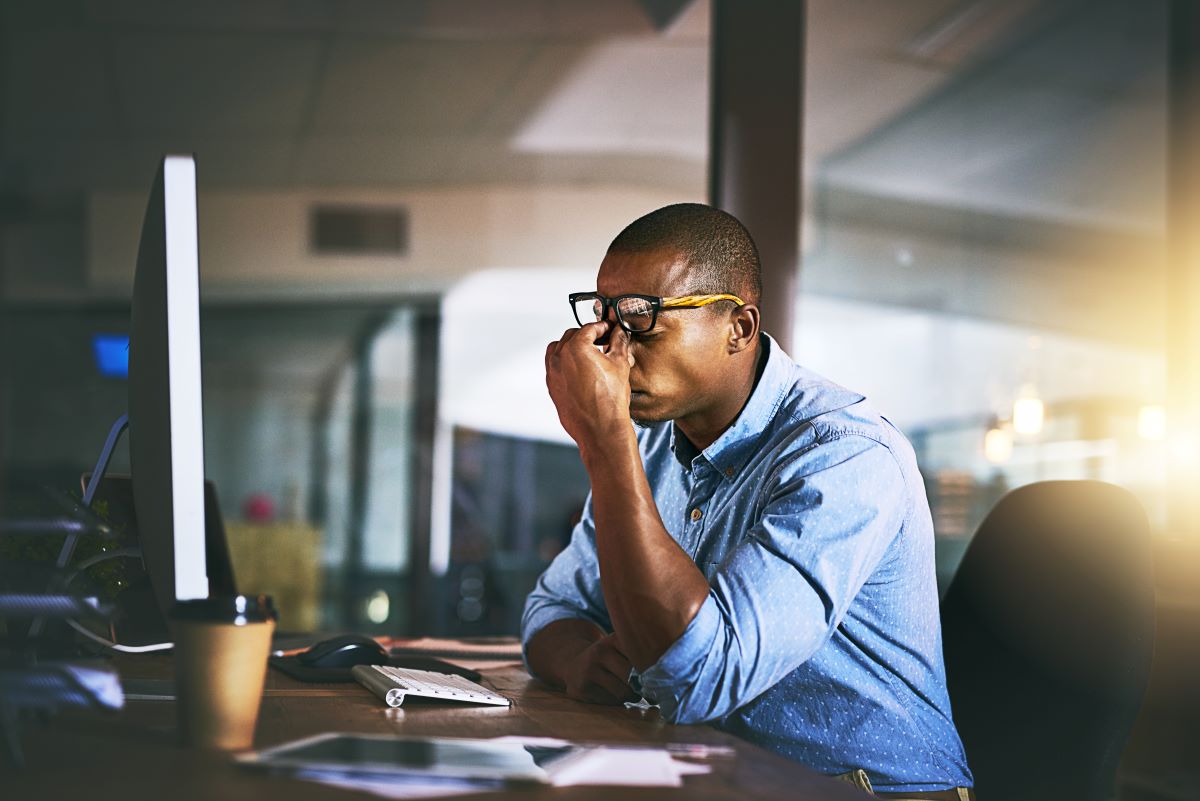Specialist Advice — 9 minutes
What is idiopathic hypersomnia?
Idiopathic hypersomnia (i.e., with no known cause) is characterized by excessive sleepiness or uncontrollable sleep attacks during the day, even if the person sleeps long enough at night and takes naps. It can also result in prolonged sleep (more than 10 hours per day).

This intense desire to sleep negatively impacts the lives of those affected, as it can impair their professional performance, cause accidents at work or on the road, and even be a source of embarrassment that makes the person reluctant to seek help. However, it is indeed a sleep disorder that should not be taken lightly.
Causes of hypersomnia
Hypersomnia can be caused by a lack of sleep, a disorder such as obstructive sleep apnea, an illness, overwork or the use of certain medications. In this case it is called secondary hypersomnia.
When hypersomnia is not caused by a particular illness or behaviour, it is called primary hypersomnia. There are three types: narcolepsy, Kleine-Levin syndrome (a very rare neurological disorder associated with cognitive and behavioural problems), and idiopathic hypersomnia, the cause of which remains a mystery. Researchers believe it is related to a malfunction of certain neurotransmitters, or to a disorder of the sleep-wake cycle.[1]
Four to six percent of the population are believed to suffer from excessive daytime sleepiness.[2] However, idiopathic hypersomnia is a rare condition whose prevalence is poorly understood. It affects an estimated one in 10,000 people if it occurs along with prolonged sleep, and one in 100,000 if it does not.[3]
Symptoms
The main symptom of idiopathic hypersomnia is an overwhelming urge to sleep, even after sleeping for a normal or longer period (over 10 hours). These sleep attacks can occur at any time of day and are not relieved by taking naps. It is important to distinguish sleepiness from chronic fatigue. Patients with chronic fatigue may lack the energy to go about their activities, but do not fall asleep while doing them.
Waking up is usually a long and difficult process, often requiring multiple snooze alarms and even assistance from others. Confusion, inappropriate behaviour (such as answering the phone instead of turning off the alarm), and even aggressiveness may also occur. These symptoms are known as “sleep drunkenness.”
During the day, sleepiness can lead to attention deficit or problems with concentration and memory, along with headaches and dizziness. More rarely, the person is unable to move for a few seconds or minutes (sleep paralysis) and experiences hallucinations.
For a long time idiopathic hypersomnia was mistaken for narcolepsy, also characterized by excessive daytime sleepiness. However, while the hypersomniac may fall asleep during the day, they do so after trying to fight off sleep, whereas the narcoleptic may suddenly nod off. Also, unlike narcolepsy, hypersomnia does not result in episodes of cataplexy, a sudden loss of muscle tone.
Diagnosis
Before diagnosing idiopathic hypersomnia, other conditions that may cause sleepiness should be excluded, such as chronic sleep deprivation, a sleep disorder, depression, a head injury or the use of medication. To identify the problem, it can be helpful to keep a sleep diary for two or three weeks, recording the length and quality of times when you are falling asleep, sleeping and waking up, as well as describing other symptoms.
A polysomnography helps rule out various other sleep disorders. After that, an iterative sleep latency test (ISLT) helps diagnose idiopathic hypersomnia by measuring brain waves with an electroencephalogram, determining if the person falls asleep and if they do so quickly (less than eight minutes on average) during four or five naps. This test allows us to distinguish between sleepiness and fatigue.
Treatment
Unlike secondary hypersomnia, where the cause can be treated, there is no cure as such for idiopathic hypersomnia. However, there are medications that can relieve the symptoms, such as psychostimulants that promote wakefulness. The most commonly used are methylphenidate (Ritalin) and modafinil (Alertec).
Other types of medication are also being studied. For example, sodium oxybate, a central nervous system depressant used to treat narcolepsy, may reduce daytime sleepiness in patients with hypersomnia and improve sleep drunkenness, a symptom that is difficult to treat.[4]
For professional support, we’re here for you.
We provide services that can help your doctor diagnose sleep disorders and determine the appropriate treatment.
- Polysomnography level 1-AASM (in laboratory)
- Home sleep test
- Sleep Care services
- Sleep hygiene program
- Online boutique
You have a question about an equipment? Chat online with our respiratory therapists.
Sources4
- Wiginton, KERI. “The Mystery behind Idiopathic Insomnia,” WebMD (accessed on July 25, 2021), https://www.webmd.com/sleep-disorders/hypersomnia-21/causes-idiopathic-hypersomnia.
- DAUVILLIERS, Yves, and Alain BUGUET. “Hypersomnia,” Dialogue in Clinical Neuroscience, Vol. 7, #4, pp. 347-356, December 2005, https://www.ncbi.nlm.nih.gov/pmc/articles/PMC3181743/.
- “Hypersomnie idiopathique,” Orphanet (accessed on July 25, 2021), https://www.orpha.net/consor/cgi-bin/OC_Exp.php?Lng=FR&Expert=33208.
- DAUVILLIERS, Yves, et al. “Placebo-Controlled, Double-Blind, Randomized Withdrawal Study of Lower-Sodium Oxybate in Adults With Idiopathic Hypersomnia,” Sleep, Vol. 44, Supplement #2, p. A195, 2021, https://doi.org/10.1093/sleep/zsab072.493.







